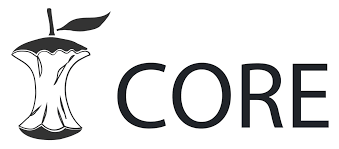Inclusion of Efficient Microorganisms in the Diet of Pigs Before Weaning
DOI:
https://doi.org/10.5281/zenodo.10793987Keywords:
bacteria, suckling pigs, animal nutrition, weaning weight, viabilityAbstract
Context: Because of the high competitiveness of pork in nutrition, modern swine breeders must search for production techniques that help solve the average low weights of weaning pigs.
Aim: To evaluate the inclusion of efficient microorganisms in the diet of pigs before weaning, to increase production yields.
Methods: The preparation of efficient microorganisms was based on dry leaves, rice semolina, molasses, and whey. The experiment consisted of 4 treatments and 3 repetitions per treatment, on a completely randomized treatment, with 6 animals per sty. The animals had equal feeding and handling conditions. The efficient microorganism inclusion rate was 0, 5, 10, and 15mL/kg live weight, respectively. The data were processed through a one-way analysis of variance, using Statgraphics plus 5.1.
Results: The best results were observed in the 15ml/kg live weight (9.33 kg average weight) treatment, with mean daily gain of 0.24 kg, feed conversion of 0.34 kg, and 100% variability, having significant differences from the other treatments (P<0.05)
Conclusions: The best treatment was the 15ml/kg live weight in all the variants evaluated, thus indicating the effectiveness of efficient microorganisms in swine production. The average consumption led to weight increases and conversion, thus ensuring greater meat yields in the stages of growth and development.
Downloads
References
Ayala, L., Bocourt, R., Castro, M., Dihigo, L.E., Milián, G., Herreram, M., & Ly, J. (2014). Development of the digestive organs in piglets born from sows consuming probiotic before farrowing and during lactation. Cuban journal of Agricultural Scienciae, 2(48), 133 - 136. http://www.cjascience.com/index.php/CJAS/article/view/471/438
Bajagai, Y. S., Klieve, A. V., Dart, P. J., & Bryden, W. L. (2016). Probiotics in Animal Nutrition: Production, Impact and Regulation. FAO. http://www.fao.org/3/a-i5933e.pdf
Beruvides Rodríguez, A., Elías, A., Valiño, E. C., Milián, G., Rodríguez, M., & González, R. (2018). Comportamiento productivo y de salud en crias porcinas suplementados con microorganismos eficientes biológicamente activos (MEBA). Engormix. Porcicultura. https://www.engormix.com/porcicultura/articulos/comportamiento-productivo-salud-crias-t42334.htm
Cortés Machado, L., & Gómez Torres, F. A. (2011). Eficiencia de los microorganismos (EM) en el sistema funcional del sistema digestivo de cerdos en la fase prelevante. Revista Spei Domus, 7(15), 31 - 34. https://revistas.ucc.edu.co/index.php/sp/article/view/606
Davies, P. R. (2011). Intensive Swine Prodauction and Pork Safety. Foodborne Phatogens and disease, 8(2), 189 - 201. https://doi.org/10.1089/fpd.2010.0717
FAO. (2016). Perspectivas alimentarias. Resúmenes de mercado. http://www.fao.org/3/a-i5703s.pdf
Ferrín Giler, A. F. (2017). Efecto de la inclusión de microorganismos eficaces en dos dietas balanceadas en cedos de engorde. [Trabajo de Titulación, previo a la obtención del Tٕítulo de Ingeniero Agropecuario, Universidad de las Fuerzas Armadas ESPE, Departamento de Ciencias de la Vida y la Agricultura]. http://repositorio.espe.edu.ec/xmlui/handle/21000/12968
FUNDESYRAN (Fundación para el Desarrollo Socioeconómico y Restauración Ambienta) (2014). Microorganismos de montaña para el consumo animal. (Video). https://www.youtube.com/watch?v=b_vbz1-Vt4w
Milián Florido, G., Rondón, A. J., Pérez. M., Boucourt, R., Rodríguez, M.,
Arteaga, F., Portilla, Y., Pérez, Y., Beruvides, A., & Laurencio, M. (2017). Characterization of bacillus subtilis strains as candidates for the preparation of animal additives. Cuban Journal of Agricultural Science, 51(2), 209-216. http://scielo.sld.cu/pdf/cjas/v51n2/cjas06217.pdf
Montejo-Sierra, I. L., Lamela-López, L., Arece-García, J., Lay-Ramos, M. T., & García-Fernández, D. (2017). Efectos de dietas no convencionales con microorganismos nativos en la cría porcina. Pastos y Forrajes, 40(4), 308 - 314. http://scielo.sld.cu/pdf/pyf/v40n4/pyf08417.pdf
Montejo-Sierra, I., Gamito, S., Lay, M., Beretervide, P., García, D., & Lamela, L. (21 al 26 de junio, 2015). Utilización de un fermenta do de microorganismos del suelo en la alimentación porcina en Cuba. [Ponencia]. XVI Congreso Nacional de Biotecnología y Bioingeniería, Guadalajara, Jalisco, México. https://www.researchgate.net/publication/292994753_utilizacion_de_un_fermentado_de_microorganismos_del_suelo_en_la_alimentacion_porcina_en_cuba
Ojeda-García, F., Blanco-Betancourt, D., Cepero-Casas, L., & Rosales-Izquierdo, M. (abr.-jun., 2016). Efecto de la inclusión de un preparado de microorganismos eficientes (IHplus ) en dietas de cerdos en ceba. Pastos y Forrajes, 39 (2). http://scielo.sld.cu/scielo.php?script=sci_arttext&pid=S0864-03942016000200006
Olivera, J. (2011). Caracterización tecnológica de
cepas de bacterias ácido lácticas
aisladas de la leche. Unidad de Tecnología de Alimentos – Facultad de
Agronomía. Universidad de la República https://www.colibri.udelar.edu.uy/jspui/bitstream/20.500.12008/1331/1/uy24-15316.pdf
Perrachón, J., & Irigiyen, A. (2003). Recursos Naturales. Microorganismos Efectivos. https://www.planagropecuario.org.uy/publicaciones/revista/R129/R_129_52.pdf
Rodríguez-Fernández, J.C., Méndez-García, V., Calero-Herrera, I., Peña-Calzada, K., Martos-Tejera, D., & Kukurtcu, B. (2016). Evaluation of the nutritional supplement VIUSID vet powder on the productive behaviour of sows and boars. Journal of Environmental Science and Engineering, B 5 (2016), 432-439. http://doi.org/10.17265/2162-5263/2016.09.005
Rodríguez, M. (2017). Evaluación de la capacidad antibacteriana de PROBIOLEV® frente a bacterias patógenas (Tesis presentada en opción al grado científico de Doctor en Ciencias Veterinarias, Universidad de Matanzas). Cuba.
Rodríguez, H. de la C., Barreto; G., Bertot, A., Vázquez, R. (2013). Los microorganismos eficientes como promotorres del crecimiento en los cerdos hasta el destete. Revista Electrónica de Veterinaria, 9(14), 1-7. https://www.redalyc.org/pdf/636/63632376004.pdf
Sánchez Gaitán, A. (2016). Efecto de un aditivo neutracéutico en cerdos de levante sobre parámetros productivos. Universidad de La Salle. https://ciencia.lasalle.edu.co/cgi/viewcontent.cgi?article=1025&context=zootecnia
Thacker, P. A. (2013). Alternatives to antibiotics as growth promoters for use in swine production. Journal of Animal Science and biotechnology, 4: 35. https://doi.org/10.1186/2049-1891-4-35
Downloads
Published
Issue
Section
License

This work is licensed under a Creative Commons Attribution 4.0 International License.
You are free to:
- Share — copy and redistribute the material in any medium or format
- The licensor cannot revoke these freedoms as long as you follow the license terms.
Under the following terms:
- Attribution — You must give appropriate credit , provide a link to the license, and indicate if changes were made . You may do so in any reasonable manner, but not in any way that suggests the licensor endorses you or your use.
- NonCommercial — You may not use the material for commercial purposes .
- NoDerivatives — If you remix, transform, or build upon the material, you may not distribute the modified material.
- No additional restrictions — You may not apply legal terms or technological measures that legally restrict others from doing anything the license permits.






